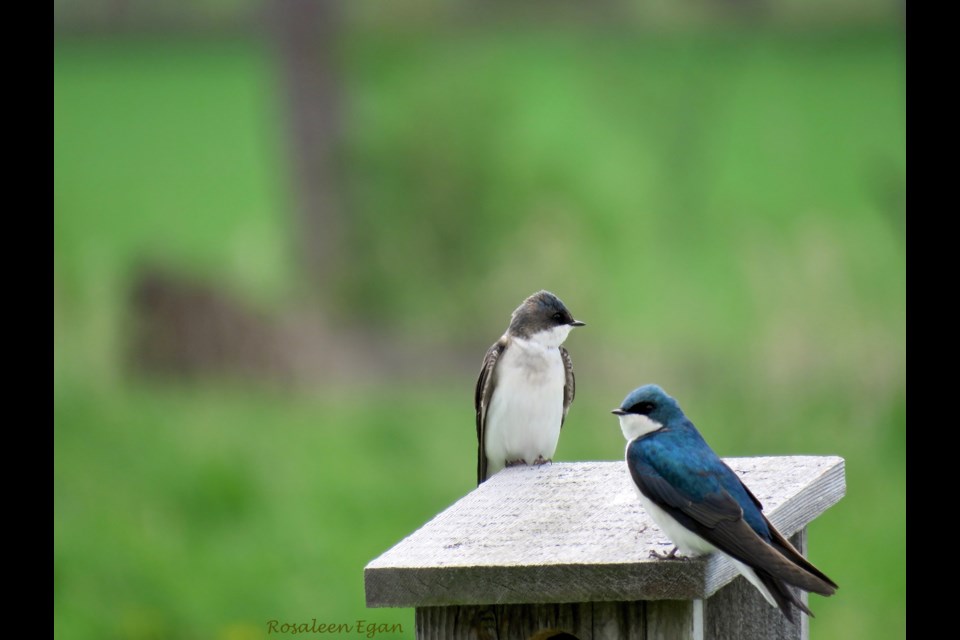I am fortunate to live on a property that attracts a variety of birds. Being able to observe familiar ones and discover new ones is a great thing. One unfamiliar species I have encountered in the last few years is the tree swallow.
Tree swallows have expressed interest in the eastern bluebird nesting boxes I can see out my window. Until this year they have conceded the boxes to bluebirds. Despite expressing interest, this year, bluebirds did not choose to move into the boxes. I have seen them around, just not using the boxes.
This left the boxes empty at the return of tree swallows to the north from their wintering grounds in Florida and Central America. Actually, the male arrives before the female, and then as a way to woo, he shows females possible nesting sites. It seems he was successful at house hunting and got the approval of a female.
Audubon.org says, “The popularity of the bluebird has been a boon to the tree swallow, which nests in holes of exactly the same size, and has taken advantage of bluebird houses over much of North America.”
Tree swallows head south in July and August, so they are here for a good time, if not a long time. When the convenience of a box is not available, they nest in tree cavities.
Although tree swallow numbers have gone down in North America, they are considered a species of low conservation concern. There are even indications populations are starting to increase. Allaboutbirds.org suggests their high-insect diet may be contaminated by pesticides. It adds, “Natural cavities, where most tree swallows build their nests, have been disappearing for the past 200 years as people clear the land, manage woodlands, cut down older trees, and remove dead trees.”
I am happy these two found a home here.
Tree swallows are known to be very social, wintering and migrating in large flocks. I haven’t witnessed these large flocks but there are generally more than one pair that come by each spring.
They are very chatty and don’t seem to be shy of people. I love the sort of gurgle they make when talking from the hydro lines, the trees and even when flying. They are amazing to watch fly quickly with sharp turns and dips over the lawn and the neighbouring hayfield, catching insects at the same time. They sometimes bob and weave between a row of trees. Besides insects, they eat seeds and are the only swallow to eat berries. This keeps them going through cold spells when insects may not be available.
I was interested in getting some photos the other day, and went into the hayfield with my camera. I was surprised and amused to see two barn swallows sitting on my eavestrough, seemingly watching the tree swallows. I imagined them having a chat about real estate and the pros and cons of a nesting box over mucking with mud to build nests in the nearby barns.
Tree swallows, primarily the female, do create nests within the box or whatever cavity they find agreeable. Allaboutbirds.org says, “The nest is often made entirely of grass, but may include pine needles, mosses, rootlets, aquatic plants, animal hair, and artificial materials like cellophane or cigarette filters.” Once the nesting cup is formed, they line it with feathers from other species.
I will say more about barn swallows next time. Each of these swallow species is beautiful with its iridescent, sleek body and is amazing to observe in flight.
I share experiences of bird visitors to this property with readers every couple of weeks. Until next time, keep your eye to the sky, and look for birds that may come by.
To listen to the chattering of a tree swallow, go to www.allaboutbirds.org/guide/Tree_Swallow/sounds.
Rosaleen Egan is a freelance journalist, a storyteller, and a playwright. She blogs on her website: rosiewrites.com.
